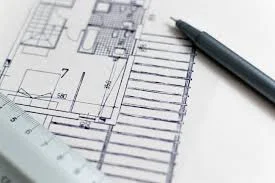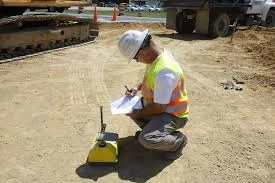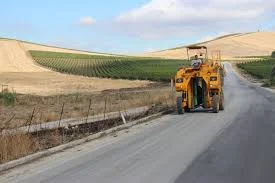Definition: A soil sample calculator is a tool used to determine various properties of soil based on the weight and volume of a soil sample. Here's how you can define it using the variables weight of soil sample (𝑊) and volume of soil sample (V):
Click the Translate button(see right) on this post to set your Own Language to understand more perfectly!!
Soil Testing Calculator
Here's how you can define it using the variables weight of soil sample (W) and volume of soil sample (V):
Bulk Density Calculation:Bulk density (BD) is the mass of soil per unit volume, typically expressed in grams per cubic centimeter (g/cm³) or kilograms per cubic meter (kg/m³). It is calculated using the formula:𝐵𝐷=𝑊𝑉
BD= VW
Where:
W = Weight of the soil sample (in grams or kilograms)
V = Volume of the soil sample (in cubic centimeters or cubic meters)
Porosity Calculation:Porosity (ϕ) represents the volume percentage of pore spaces in the soil sample.
It can be calculated using the bulk density as follows:𝜙=1−𝐵𝐷𝜌
ϕ=1− ρBD
Where:BD = Bulk density of the soil sample (in g/cm³ or kg/m³)ρ = Particle density of the soil (in g/cm³ or kg/m³), which is the density of the solid particles composing the soilMoisture Content Adjustment:If the soil sample contains moisture, you may need to adjust the weight of the sample to account for the moisture content.The adjusted weight (𝑊𝑎 ) can be calculated as:𝑊𝑎=𝑊−𝑊𝑚
Where:𝑊𝑎 = Adjusted weight of the soil sample (in grams or kilograms)Wm= Weight of moisture in the soil sample (in grams or kilograms)The weight of moisture (Wm) can be determined by drying the soil sample in an oven and subtracting the weight of the dried soil from the original weight.
Other Calculations:Depending on the specific properties or characteristics you're interested in, you may perform additional calculations using the weight and volume of the soil sample. For example, you could calculate total soil mass, particle density, void ratio, or other parameters relevant to soil analysis and engineering.
By utilizing these calculations within a soil sample calculator, you can quickly and accurately determine important soil properties necessary for various applications such as agriculture, construction, environmental science, and geotechnical engineering.
A soil testing calculator can be incredibly useful for various applications, especially in agriculture, construction, environmental science, and gardening. Here's how it can be beneficial and potentially profitable:
Optimizing Fertilizer Use: Soil testing helps determine the nutrient content and pH level of the soil. By knowing these factors, farmers and gardeners can tailor their fertilizer applications to meet the specific needs of the soil and the plants they are growing. This optimization can lead to increased crop yields and healthier plants, which can translate to higher profits for farmers through increased productivity.
Preventing Overuse of Chemicals: Over-application of fertilizers and other chemicals can not only be costly but also harmful to the environment. Soil testing allows for precise application, reducing the risk of over-fertilization and minimizing environmental impact. This sustainability aspect can be appealing to environmentally conscious consumers and may open up niche markets for eco-friendly products.
Customized Soil Amendments: Soil testing provides insights into the deficiencies and excesses of nutrients in the soil. With this information, soil amendments can be customized to address specific soil issues. For example, if a soil test reveals low levels of nitrogen, farmers can apply nitrogen-rich fertilizers or organic amendments to improve soil fertility. Offering customized soil amendment solutions can be a lucrative business opportunity for agricultural consultants or companies specializing in soil health.
Land Development and Construction: Soil testing is essential for assessing the suitability of land for construction projects. By analyzing soil properties such as bearing capacity, compaction, and drainage, engineers and developers can make informed decisions about site preparation and foundation design. Offering soil testing services to construction firms can generate revenue, especially in areas experiencing rapid urbanization and infrastructure development.
Environmental Remediation: Soil testing plays a crucial role in environmental assessment and remediation projects. Contaminated soil can pose risks to human health and the environment, and accurate testing is necessary to determine the extent of contamination and develop remediation strategies. Environmental consulting firms specializing in soil testing and remediation can secure contracts from government agencies, industries, and property developers to clean up contaminated sites.
A soil testing calculator can help individuals and businesses make informed decisions about soil management, leading to improved agricultural productivity, environmental sustainability, and potential revenue opportunities in various sectors such as agriculture, construction, and environmental consulting.
Usefulness of Soil testing , such as for plant grow properly.
A soil test is basically an analysis of a soil sample done for various purposes. The most common type is done to figure out the nutrients available to plants and determine what fertilizers you might need.
Here’s how useful they can be in real life:
Better plant growth: By understanding what nutrients your soil is lacking, you can fertilize appropriately. This leads to healthier plants with better yields.
Save money on fertilizer: Soil tests help you avoid over-fertilizing, which can be wasteful and even harm your plants.
Protect the environment: Excess fertilizer can run off into waterways, causing algae blooms and other environmental problems. Soil testing helps you use fertilizer efficiently, reducing this risk.
In addition to nutrient testing, soil tests can also be used to assess things like:
Soil pH (acidity or alkalinity)
Presence of contaminants
Soil suitability for construction projects
Overall, soil testing is a valuable tool for anyone who wants to improve their soil health and grow healthy plant.
Usefulness in various construction:
soil testing is crucial not just for plant life but also in construction projects. It's essentially a scientific way to assess the soil's properties and see if it can support the planned structure.
Here's why soil testing is important for construction:
Safe and stable foundations: Knowing the soil composition (type, strength, etc.) helps determine the most suitable foundation for the building. A weak foundation can lead to cracks, uneven settling, and even structural failure.
Cost-effective construction: Soil testing can identify potential problems early on, allowing for adjustments in the design or foundation type. This can prevent costly repairs down the road.
Reduces construction risks: By understanding the soil's characteristics, engineers can anticipate issues like excessive settlement, liquefaction (during earthquakes), or expansive soils (that shrink and swell with moisture changes).
There are various types of soil tests performed for construction, each providing specific information. Some common ones include:
Standard Penetration Testing (SPT): Estimates how much weight the soil can support at a given depth. This helps determine the bearing capacity, crucial for foundation design.
Moisture Content Test: Measures the amount of water in the soil. Excess moisture can lead to foundation problems.
Proctor Compaction Test: Analyzes how well the soil compacts, which is essential for proper load-bearing capacity.
Overall, soil testing in construction plays a vital role in ensuring the safety, stability, and cost-effectiveness of a building project.
How to earn from the Soil testing Calculation
Testing and analyzing soils can be a niche but potentially lucrative business, especially with increasing environmental concerns and construction projects requiring soil assessments.
Here are various ways to earn money by providing soil testing services:
1. **Freelance Soil Testing Consultant:** Offer your expertise as a freelance consultant to individuals, businesses, or government agencies requiring soil analysis for various purposes such as agriculture, construction, environmental impact assessment, etc. You can charge on an hourly or project basis.
2. **Soil Testing Laboratory:** Establish a soil testing laboratory equipped with the necessary instruments and expertise to analyze soil samples. Offer services to farmers, landscapers, construction companies, environmental agencies, and homeowners for a fee.
3. **Mobile Soil Testing Unit:** Invest in a mobile soil testing unit equipped with portable testing equipment and offer on-site soil testing services. This can be particularly useful for large-scale agricultural operations or construction sites where immediate results are required.
4. **Soil Testing Kits:** Develop and sell DIY soil testing kits for homeowners and gardening enthusiasts. These kits can include instructions on how to collect soil samples and perform basic tests for pH, nutrient levels, soil composition, etc.
5. **Online Soil Testing Services:** Develop an online platform where customers can submit soil samples for analysis. Offer various testing packages with different levels of detail and turnaround times. Provide personalized recommendations based on the test results.
6. **Soil Health Workshops and Training:** Organize workshops, seminars, and training programs on soil health management, soil testing techniques, and interpretation of test results. Charge a fee for attendance or offer certification programs for professionals.
7. **Soil Remediation Services:** Expand your business to offer soil remediation servicesfor contaminated sites. This may include soil testing to determine the extent of contamination, developing remediation plans, and implementing cleanup strategies.
8. **Partnerships with Agricultural Extension Services:** Collaborate with agricultural extension services, universities, and research institutions to provide soil testing services to farmers and landowners. This can help reach a wider audience and establish credibility.
9. **Consulting for Sustainable Land Use:** Provide consulting services to land developers, urban planners, and policymakers on sustainableland use practices based on soil analysis. This can include recommendations for erosion control, land reclamation, and conservation efforts.
10. **Value-Added Services:** Offer additional services such as GIS mapping, drone surveys, and environmental impact assessments to complement soil testing services and provide more comprehensive solutions to clients.
11. **International Projects:** Explore opportunities to participate in international projects related to soil testing and land management. This could involve consulting for agricultural development programs, environmental conservation projects, or infrastructure development initiatives in other countries.
12. **Specialized Testing Services:** Offer specialized soil testing services for specific industries such as mining, oil and gas exploration, geotechnical engineering, etc. Develop expertise in niche areas that require specialized testing techniques and equipment.
By diversifying your offerings and targeting different market segments, you can maximize your earning potential in the field of soil testing and analysis.
More you want to know please visit, https://sahidulsir.blogspot.com
Do YOU Want To Earn Money In Various Ways, Click The Link & Explore Your Field of Interest!!!






























